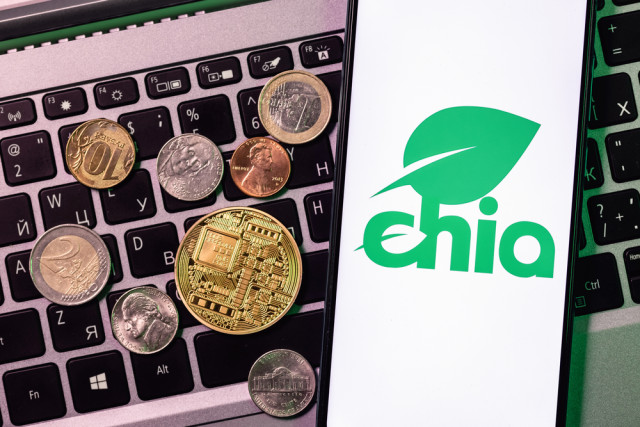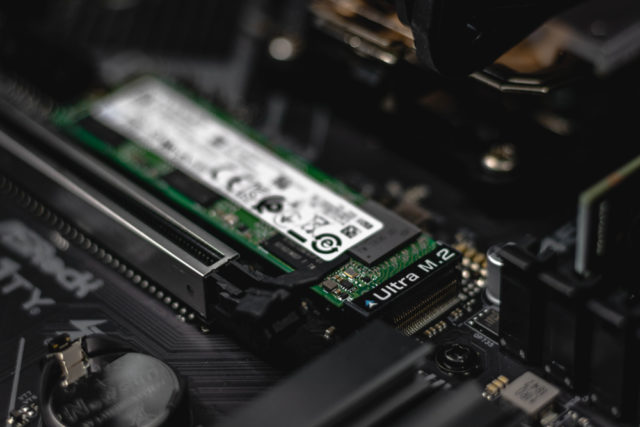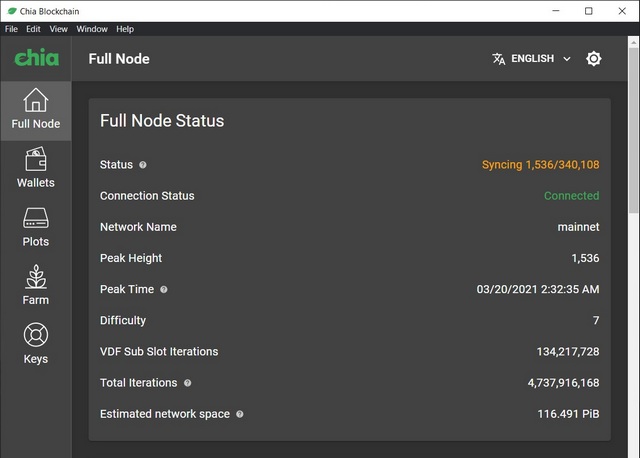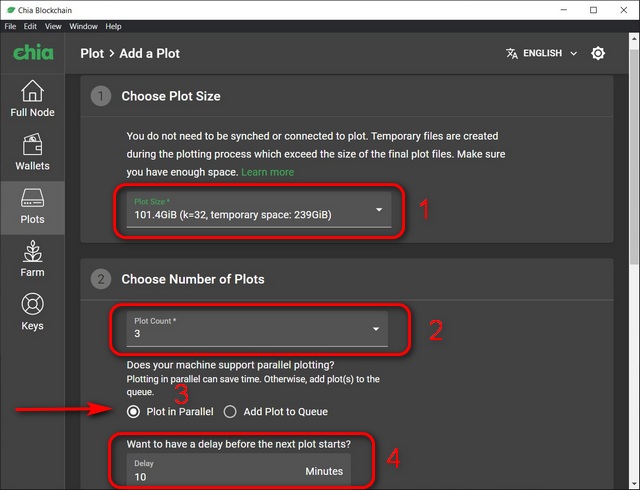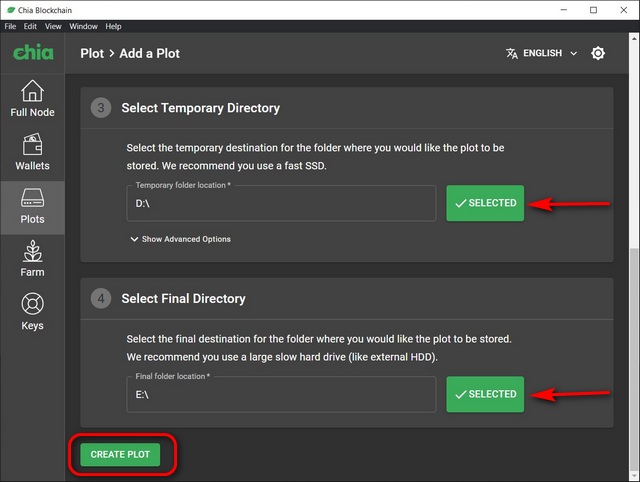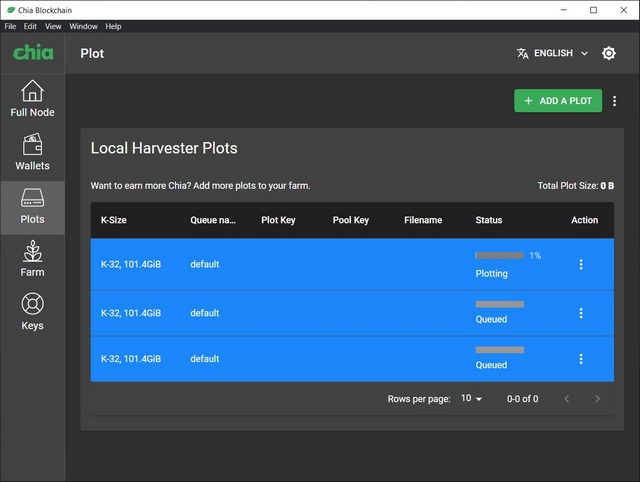Chia Coin: What Is It and How to Farm It on Windows?
In this article, we will tell you everything about the all-new Chia cryptocurrency and Chia blockchain software. We will also explain how you can farm Chia coin (XCH) on your Windows 10 PC and what you need to know before you get down to making your own Chia plotting rig. So without further ado, here’s all you need to know about Chia coin and how to mine it.
What is Chia Coin (XCH)?
Chia Coin is a new cryptocurrency based on an open-source blockchain technology. Unlike ‘Proof-of-Work’ cryptocurrencies like Bitcoin, Chia mining is based on the amount of hard-disk storage space devoted to it rather than processing power. It is designed to offer a smart transaction platform that the founders believe has the potential to improve the global financial and payments systems. According to Chia Network, the company that develops and maintains the Chia blockchain, the new cryptocurrency will make digital tokens “more decentralized, more secure and easier to use”. However, the primary benefit of the Chia coin right now is that it is much less energy-intensive than existing cryptocurrencies. How does Chia coin use less power, you ask? Well, Chia uses storage space on your HDD or SSD to create coins rather than relying on power-hungry mining rigs running dozens of graphics cards and ASIC miners. Created by Bram Cohen, the inventor of the BitTorrent protocol, Chia uses a new version of the ‘Nakamoto Consensus’ algorithm that gave birth to the blockchain technology as we know it. It is only the world’s second cryptocurrency since Bitcoin to use the algorithm, which was created by Bitcoin’s pseudonymous founder, Satoshi Nakamoto, back in 2008. As you can see, the Nakamoto Consensus algorithm was originally detailed for the first time in the Bitcoin white paper more than a decade ago.
How Does Chia Coin Work?
The workings of the Nakamoto Consensus algorithm are beyond the scope of this article. But for now, it would suffice to say that it uses a variant of the proof-of-work consensus algorithm on a Byzantine Fault Tolerance (BFT) peer-to-peer network to verify the authenticity of a blockchain. Chia puts a new twist on the existing algorithm by combining the ‘Proof of Space’ and ‘Proof of Time’ algorithms. While the former proves that unused hard drive space is being allocated for a particular purpose (Chia ‘farming’ in this case), the latter requires a small period of time to pass between the creation of blocks. This ensures consistent, time-stamped blocks that increase the overall security of the blockchain. The Proof of Space and Proof of Time algorithms must be used in conjunction with one another in order for them to be used as a consensus method in Chia coin farming.
What is Chia Coin Farming?
Chia coins are mined by ‘farmers’ by running the Chia blockchain software on their computers. To create Chia coins, farmers need to ‘seed’ unused space on their hard disk drive by installing the Chia blockchain software. It stores cryptographic numbers on a portion of the disk known as a ‘plot’. Each plot has a hash and as the Chia blockchain extends, each farmer can see if their hashes match the next blockchain step. “When the blockchain broadcasts a challenge for the next block, farmers can scan their plots to see if they have the hash that is closest to the challenge. A farmer’s probability of winning a block is the percentage of the total space that a farmer has compared to the entire network,” says the official documentation on Chia Coin.
What is Chialisp?
A notable new development with Chia is a new blockchain programming language called ‘Chialisp’ that Cohen claims is powerful, easy-to-audit, and secure. It is an on-chain smart transaction development environment that promises improved security and transparency of cryptocurrencies. Chialisp is a powerful and secure LISP-like language for encumbering and releasing funds with smart-contract capabilities. It will also help make blockchain programming easier for coders, claims the official Chia website.
Chia Coin: Benefits and Advantages
Chia eliminates some of the biggest problems with cryptocurrency, including the energy-intensive mining process required to create most digital tokens. Here are some of the most notable benefits of the Chia coin:
Eco-Friendly
One of the biggest benefits of Chia is that it will be more power-efficient than current cryptocurrencies. In fact, it is being promoted by the founders as an ‘eco-friendly’ alternative to Bitcoin. The version of the Nakamoto consensus algorithm that Chia uses removes the energy demands of Proof of Work by reducing emphasis on processing muscle and relying on storage space instead. That makes it less energy-intensive and more environment-friendly.
Enhanced Security
Another benefit of Chia coins is the enhanced de-centralization of its blockchain, which means it offers better security than its existing peers. Chia is also adopting more modern cryptographic tools to enable more intuitive smart transactions. However, Chia’s single biggest safeguard against hackers is that it does not use Proof-of-Stake (PoS) concept, a consensus mechanism that Ethereum is moving towards. Chia Network believes this will help safeguard it against rogue nation-states and other hacking threats, particularly because of the inability of PoS networks to recover from a 51% attack.
Less Volatility
Chia Network, the for-profit company behind the new cryptocurrency, also holds a pre-farm (Strategic Reserve) to ease the price volatility. It will thereby help mitigate bubbles and crashes. That, they believe, will drive the adoption of Chia by mainstream consumers. As such, the Chia Network favors predictable, continuous inflation over a hard cap, unlike Bitcoin and most other cryptocurrencies.
Regulatory Oversight
This could be either a positive or a negative based on your point of view. However, given that one of the biggest stumbling blocks for crypto adoption around the world is a lack of regulatory oversight. And well, Chia’s embrace of regulators is a welcome move, even though it admittedly goes directly against some of the stated purposes of digital tokens. Besides, the company plans to release a Chia IPO that will essentially allow investors to treat its equity as an exchange-traded fund (ETF) for XCH.
Open Source and Accessibility
Finally, Chia is based on an open-source and accessible technology that will enable anyone to build a new wallet without any intervention from the Chia Network. But, the company says it will help crypto exchanges and merchant processing partners with “support and integration services, joint marketing and lending for liquidity”.
Chia Coin: Limitations and Drawbacks
Chia gets rid of some of the biggest problems with cryptocurrency mining, but it isn’t without issues itself. The single biggest problem with the technology is that it uses up a ton of storage space, which is creating a massive shortage of SSDs globally. Hard drive prices have already jumped exponentially since the release of the Mainnet a few weeks back. Chia farming has created a global SSD and HDD shortage, and the retail prices have gone up by several hundred dollars since the start of this year. Another major drawback of the Chia coin is the way ‘blocks’ are allotted. It involves an element of luck, as we describe later in this article. What that means, in essence, is that while some lucky folks might hit the jackpot after farming just one or two blocks, others might not get the prize in years.
How to Buy, Sell, and Trade Chia Coin
Major cryptocurrency exchanges like Coinbase and Binance are yet to incorporate support for Chia. However, you can still buy it from other sources, including exchanges like Gate.io. Now, you must be wondering – how much is a Chia coin worth in the market? As of writing this article, the price for Chia coin (XCH) is around the $800 mark, having touched a high of around $1,900 recently. Moreover, the only way to buy Chia as of now is to trade in other cryptocurrencies. That means you already need to hold Bitcoin, Ethereum, etc., to be able to get your hands on Chia coins without farming it yourself. In India, Chia is not available to buy on any crypto exchange as of May 2021. However, the company says it is planning to launch in major crypto exchanges around the world soon, so let’s hope India makes the cut as well. That said, the constant flip-flops and conflicting reports about the status of cryptocurrencies in India could be a massive disincentive for Chia Network. As of May 2021, buying and selling cryptocurrencies like Bitcoin is legal in India. However, with controversies and confusion surrounding the impending legislation, it’s not clear whether that will remain the case in the future.
How to Farm Chia Coin Cryptocurrency
By now, you know that Chia farming is different from the ‘mining’ process for Bitcoin and other existing cryptocurrencies. However, much like Bitcoin mining, you only need a working computer to get started. Do note that this tutorial is for Windows users only, and the links herein are for Windows-related downloads and instructions.
Hardware Requirements
As a beginner, any computer with 250GB+ storage space (preferably an SSD) running Windows, Linux, or macOS is all you need for your first experience with Chia farming. Your chances of winning a Chia coin depend on the size of your ‘farm’. So the more storage you devote to farming, the better your chances of winning.
SSDs for Plotting/ Temporary Directory
SSDs are recommended because Chia farming is a highly write-intensive process that would take inordinately longer on HDDs. Depending on their technology and interface, SSDs could be 10-20 times faster than mechanical hard drives in terms of read- and write speeds. As a beginner, you can take a pick from the best consumer SSDs but once you get the hang of it, high-capacity data center SSDs are the way to go. They are typically faster and more reliable than the consumer versions and come with massive storage capacities. According to an official blog post by Jonmichael Hands, the VP of Storage Business Development at Chia Network, “The Chia team and community advocate using data center-class SSDs or consumer drives meant for high-end desktops and workstations with a high TBW endurance rating for the plotting process. If a user selects a high-endurance data center SSD, they can plot for up to 10 years before wearing out the device during the plotting process.” The community seems to believe that 12TB to 18TB enterprise-grade drives offer the best value for Chia farming. However, the recent price hike because of commercial Chia farming means that you should expect to pay through your nose for those drives right now. It sure reminds you of the GPU shortages because of Bitcoin mining before ASIC miners became more popular. And well, the likes of Nvidia, Intel, and TSMC say that the global chip shortage could continue until 2023.
HDDs for Final Directory
For the ‘Final Directory’ drives, you can use either SSDs or HDDs. However, they should preferably have large enough capacities to accommodate all your plots. It is generally acceptable to use mechanical HDDs for the final directory because the workloads won’t be nearly as intensive as they are with temporary directories. However, with HDD prices soaring exponentially because of Chia farming, it will cost you an arm and a leg to buy large-capacity data-center HDDs with a high MTBF (Mean Time Between Failure) rating. Once you have got your farming rig sorted, here’s how you go about plotting on the Chia blockchain. Yeah, you are now going to learn how to farm Chia coins.
Step 1: Install the Chia Blockchain Software
To download the Chia blockchain software, go to the Chia blockchain installation page on GitHub (link here) and scroll down to the section on your operating system.
Step 2: Setup Chia Blockchain
Once you have installed the software, open the program and select the “Create a New Private Key” option. If you already have a wallet, use the “import From Mnemonics” option.
Note: If your anti-virus or Firewall blocks it, disregard the warning and allow access. You can also permanently add Chia Blockchain software to the exceptions list to avoid any future conflicts.
The software will create a new wallet for you with a 24-word mnemonic, as seen below. These words are collectively your passwords. Without them, you won’t be able to access your Chia wallet. So copy/ paste them into a document (in the right order), save it, and also take a legible screenshot for good measure. Then, click on “Next“.
Note: The screenshot above is for demo purposes only. No actual Chia wallet exists with these mnemonics.
You will now see the ‘Full Node’ page. The software will sync with the Chia blockchain to incorporate all the recent changes. You will see the “syncing” count change right in front of your eyes.
Once syncing is complete, the status will change to “synced” instead of syncing. Syncing can take hours, depending on your setup and your location. The software can run in the background while you work on other tasks. Do not shut down the computer or shut off your internet connection because the process will then need to restart from scratch, resulting in inordinate delay.
Step 3: Plotting Chia Blockchain
Just like a real farm, you first need to create ‘plots’ before the farming can start. Here’s how you go about it:
To create plots, navigate to “Plots” on the left sidebar and then click on “Add a Plot“.
You will now have to choose your plot size [1]. We suggest you follow the Chia Network’s recommended settings – Plot size = 101.4GiB (k=32; temporary space: 239GiB). Now choose the number of plots [2] depending on available storage space on your computer. Each plot needs around 250-270GiB. So for a 1TB SSD, you can only get a maximum of up to 3 concurrent plots (3 x 270GiB = 810GiB). Now select “Plot in Parallel” [3] and select a 10-minute delay [4] between each plot starting.
Note: GiB, TiB, or EiB (Gibibytes, Tebibytes, and Exbibytes) are not to be confused with GB, TB, and EB. 1GiB = 1024³ bytes, while 1GB = 1000³ bytes. As for k=32, it refers to the size of your plots. You can double the size with k=33, but Chia network only plans to move beyond k=32 between 2026-2031. So for now, it’s best to stick to k=32. Meanwhile, the ‘Plot in Parallel’ setting will save time, and the 10-minute delay will enable the Chia program to move a finished plot from the temporary directory to the final directory.
Now scroll down while keeping the rest of the settings at their default values. Finally, choose your temporary and final directories, and hit the “Create Plot” button at the bottom. Plotting will start instantly.
If all goes according to plan, it takes about 8-12 hours to create active plots on a Chia farm. So you can repeat the process about two-three times per day.
The information above should be good enough for a beginner to dip their toes into the world of Chia farming. However, if you have already gained some experience and want more information to ramp up your efforts or get into commercial farming with multiple machines, check out the official documentation about plotting and harvesting.
How Much Can Chia Farmers Expect to Earn?
Your chances of solving a Chia coin block is equal to your portion of the total Chia ‘netspace’. Currently, the total Chia netspace is at 12.33 EiB (Exbibytes) and is increasing rapidly. That means a typical 10TB enterprise-class SSD, which can hold around 91 blocks, would put your odds at 0.0001% with an expected win-time of 10 months. Do note that this will change with time as the total netspace keeps increasing with 4,608 Chia blocks every day. You can use an online Chia calculator (website) to make estimates about your chances of winning and potential profits based on the prevailing Chia pricing.
What Is Pooling and How it Can Increase Your Chances of Winning Chia?
‘Pooling’ is crypto-speak for miners/ farmers joining together resources to win more regularly and predictably. the Chia Network promised to release the reference code for pooling by the end of May 2021, but it’s not officially here yet. Once it is live, you can join commercial pools for a small fee, whereby the pool operator will use Chia’s method to calculate the farmers’ share, collect to pool wallet, and distribute XCH to pool participants. You can even start your own pool if you have experience writing pool server code for another cryptocurrency. In that case, you will only need to adapt that pool code with Chia’s reference pool code. Do note that to start commercial pool servers, you will need to have good OPSEC to prevent hackers from targeting your business. One thing to note here is that anyone who wants to join a pool will need to replot to use the official pooling protocol. According to Chia Network, “Anyone who wants to join a pool will need to create new K32 or above portable plots”. So you won’t be able to re-use existing plots in a Chia farming pool using the official software. You can, however, use the closed-source (unofficial) HPool software to use your existing plots in a pool. If you are OK with that, download HPool from GitHub and get started. Meanwhile, you will have to pay to switch pools using the official software. The company will charge 1 mojo (1 trillionth of a XCH) to switch pools. If you are just starting out and don’t have any Chia coins yet, you can get 100 mojo from the official Chia website. The network, thankfully, will support both original and portable plots on the same machine.
Things to Know Before Getting Into Chia Farming
While Chia farming promises to bring you riches, you have to be aware of the potential pitfalls. Here’s what you should keep in mind before jumping into Chia farming:
The first and foremost thing to note is that with the total netspace increasing every day, you’re unlikely to hit a block very often. Another thing to note is that Chia is a new phenomenon right now, so it will take some time to know whether this is just a passing fad or if it’s here to stay. Thirdly, it is unlikely to be a rewarding endeavor if you insist on going solo. You are almost surely better off trying to join a pool for guaranteed results.
Now that we are done with the standard warnings, here are some of the things you need to keep in mind while running your Chia farming operations:
Your farming rig has to run 24×7 for the best chances of winning a block. That’s because interrupting the Chia software will restart the syncing process, which is highly time-consuming. You will not be able to farm until synchronization is complete. On Windows PCs, change the power setting to ‘Never Sleep’ to ensure your rig stays running throughout the night. For more info, check out our detailed article on Windows power settings. It is recommended to have at least two computers for Chia farming – one for plotting and another for harvesting. To run the Chia blockchain on multiple computers using the same key, select ‘Import from Mnemonics’ instead of creating a new wallet in Step 2. Linux is the preferred option for Chia farming because it’s typically faster than Windows or Mac for plotting operations. If you want to give away or sell your Chia plotting rig in the future, you will have to manually delete the wallet keys using the “Delete All Keys” option. That’s because uninstalling the Chia blockchain software does not automatically delete the keys.
Chia Coin: The Eco-Friendly Alternative to Bitcoin
Possibly the most interesting development in the crypto universe since the brouhaha over Dogecoin, Chia coin has caught the attention of the mainstream global media with its promise of a ‘green’ cryptocurrency. However, it remains to be seen if it can replicate the success of Bitcoin, Ethereum, and Doge in the coming days. Either way, now that you have a basic concept of the Chia coin, do you think it will offer better value than its established counterparts in the long run? Let us know in the comments down below.
